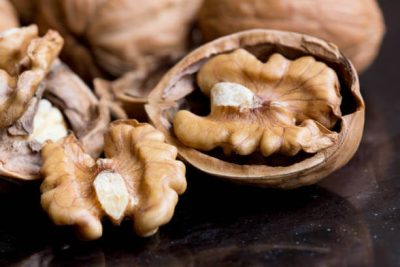About Walnuts
When we talk about “eating walnuts”, we include the skin of course. The nutritional benefits of walnuts are in an 90% included in the skin, within the key phenolic acids, tannins, and flavonoids. Some people remove the walnut skin because there can be a slight bitterness on that, but that’s the tasty point, the difference in flavours, the balance among the others. Anyhow, we encourage you not to remove this phenol-rich portion.

Walnuts provide an unusually high level of vitamin E in the form of gamma-tocopherol, which has found that provides us a significant protection from heart problems. In general, people that consume tree nuts (including walnuts) in average about 1.25 ounces per day, takes in 5 grams more fiber in comparison to those who don’t, 260 milligrams more potassium, 73 more milligrams of calcium, 95 more milligrams of magnesium, 3.7 milligrams more vitamin E, and 157 milligrams less sodium! It DOES makes you Think!
Phytonutrient research on the antioxidant and anti-inflammatory benefits of walnuts has moved this food further and further up the ladder of foods that are protective against metabolic syndrome, cardiovascular problems, and type 2 diabetes. Some phytonutrients found in walnuts, the quinone juglone for example, are found in virtually no other commonly-eaten foods. Other phytonutrients -like the tannin tellimagrandin or the flavanol morin- are rare and valuable as well, as antioxidants and anti-inflammatory nutrients that, within the phytonutrients helps explain the decreased risk of certain cancers -including prostate cancer and breast cancer- in relationship to walnut consumption.

It would be difficult to estimate the potential health benefits associated with this food family! In the majority of dietary studies, approximately one ounce of tree nuts per day is the minimal amount needed to provide statistically significant benefits. In the case of walnuts, one ounce means about 7 shelled walnuts, or 14 walnut halves.
Walnuts not only taste great but are a rich source of heart-healthy monounsaturated fats and an excellent source of those hard-to-find omega-3 fatty acids. Like most nuts, they can easily be added to your Healthiest Way of Eating. Just chop and add to your favorite salad, vegetable dish, fruit, or dessert. More serving suggestions follows.


